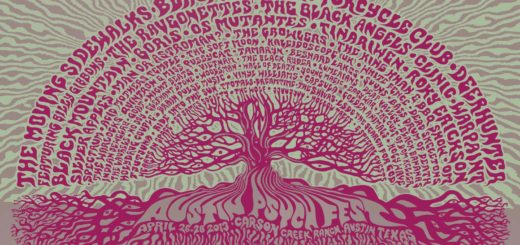The right kind of scary
 I spend many October evenings as a guide at the charity haunted house “Scare For a Cure.” In what may be the only acting/hiking gig in the world, I’m responsible for safely leading groups of up to six guests through our extremely gory location-based theatrical event, which actually takes place on Richard Garriott’s private property.
I spend many October evenings as a guide at the charity haunted house “Scare For a Cure.” In what may be the only acting/hiking gig in the world, I’m responsible for safely leading groups of up to six guests through our extremely gory location-based theatrical event, which actually takes place on Richard Garriott’s private property.
Improbable as it sounds– being that Scare is a low-budget heir to the “Britannia Manor” haunted houses that Garriott created in the late 80’s– our guests literally crawl, crouch and interact with actors as they physically travel through our story. Some guests have said they feel like they are inside a horror movie.
Earlier this October, I was leading a very scared guest through our production of “H1Z1: Zombie Wasteland” when I realized she was having a problem. Instead of enjoying being scared in the right way (like horror movie fans are during a flick), her quick breathing and jumpy behavior indicated she might be truly terrified.
At the moment I realized that my guest might be too scared to be having a good time, she was facing an eight foot tall zombie, a horde of zombie minions, and complicated actor blocking that would have made instantly removing her difficult.
In order to reassure my guest that this was just an elaborate theatrical production to raise money for charity, I started verbally soothing her. While I’m not sure exactly what I whispered into her ear while I had my arms wrapped reassuringly around her shoulders, I think I revealed that the seemingly gruesome zombie was actually a nice guy named Charlie who was wearing stilts to enhance his impressive natural height. I probably added that Charles “Charlie” Smith, 30 is a devoted father, that he works in the computer industry, and that he really likes Halloween.
Since, as a guide, I see Smith the super-zombie at least half-a-dozen times a night, I tend to forget the intense impact that his custom –made makeup, costume and special effects have on people.
Oddly, people who haven’t been to “H1Z1” have also seen Smith portraying a zombie.
Impossibly early one Sunday morning this past August, I visited the South Austin home of Robin and Mike McShaffry.
When I stumbled in the door clutching a cup of coffee, Robin McShaffry was aiming a hairdryer at Smith’s face, attempting to quickly cure the liquid latex she was using to turn his smooth skin into zombie flesh. McShaffry was heading the makeup team that was transforming Smith into a zombie for one of those miniscule “No Talking” bumpers played before the feature at the Alamo Drafthouse movie theaters, where the patrons are sternly advised against chatting during the show.
Getting Smith “ready for his close up” took a team of three makeup artists several hours. Following complex work on Smith’s face, the team detailed his hands, nails and ears. They covered his neck and the large surfaces of his arms with a grey – waterbase foundation. (The pancake foundation used on Smith that day was similar to my own makeup, except that the shade I usually wear is the color of living flesh!) Smith was being fussed over so much, he joked he was at the dayspa of the undead.
When the bumper shoot moved to the Alamo Drafthouse Theater on South Lamar, I tagged along. Watching McShaffry darken Smith’s teeth to a rotten zombie hue, I realized that behind every good zombie … is a really good team of zombie makers.
Getting Smith ready to be a zombie in the theatrical production of “H1Z1” also takes time. Each evening before the show, McShaffry applies a custom-made prosthetic to Smith’s face (the homemade device was constructed using an elaborate hot-foam latex process). She then spends time painting on top of that structure, a process that takes McShaffry about two hours every night.
Gussied up in his undead garb with his elaborate face and customized stilts, Smith is one impressive zombie.
“The makeup isn’t what makes the zombie, it’s the actor,” McShaffry reminded me.
While zombies (like the one Smith plays) aren’t real, the money Scare raises to battle the true terror of cancer certainly is. Last year Scare For a Cure donated $15,000 to the Breast Cancer Resource Centers of Texas. The centers help support women who are dealing with the very scary diagnoses and treatment of breast cancer. The BCRC is once again Scare’s designated charity recipient.
Zombies are scary in the right way, cancer is scary in the wrong way.
Hanks lives in Austin. Full disclosure: Hanks’ husband, Paul Sicard is on the board of Scare For a Cure, a 501(c) (3) non-profit, and Hanks helped write the script for “H1Z1: Zombie Wasteland.”






















